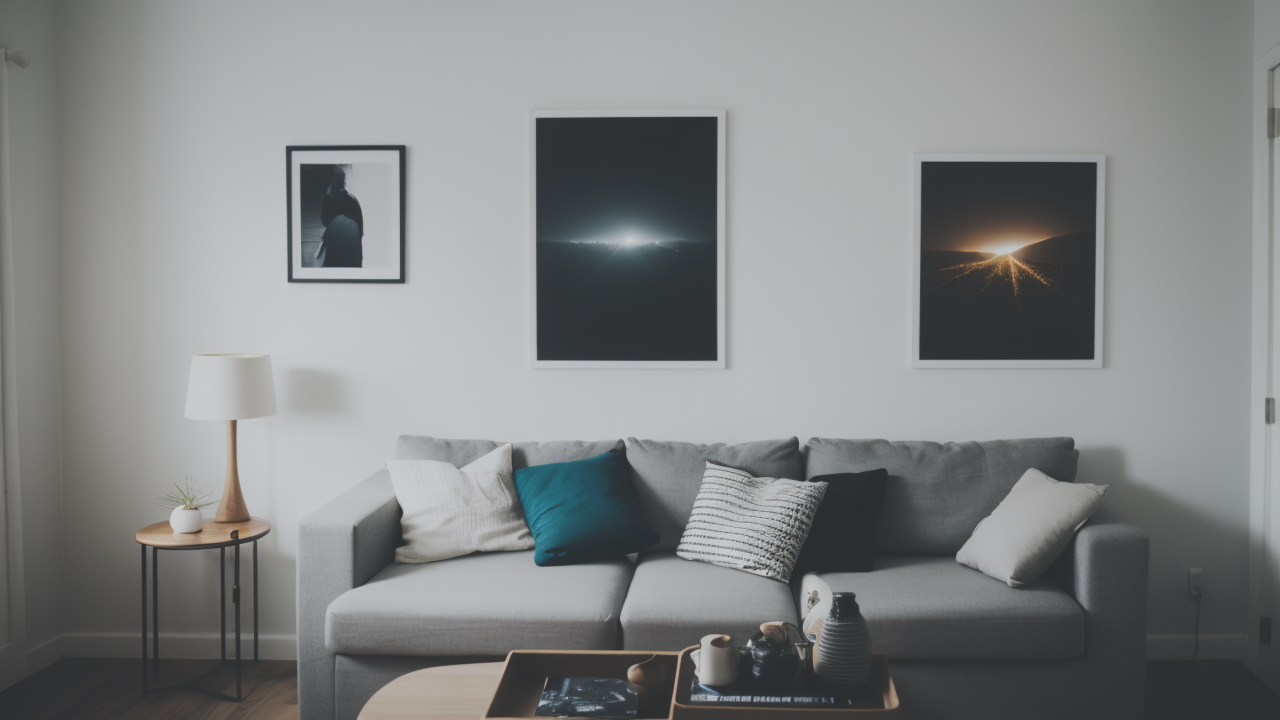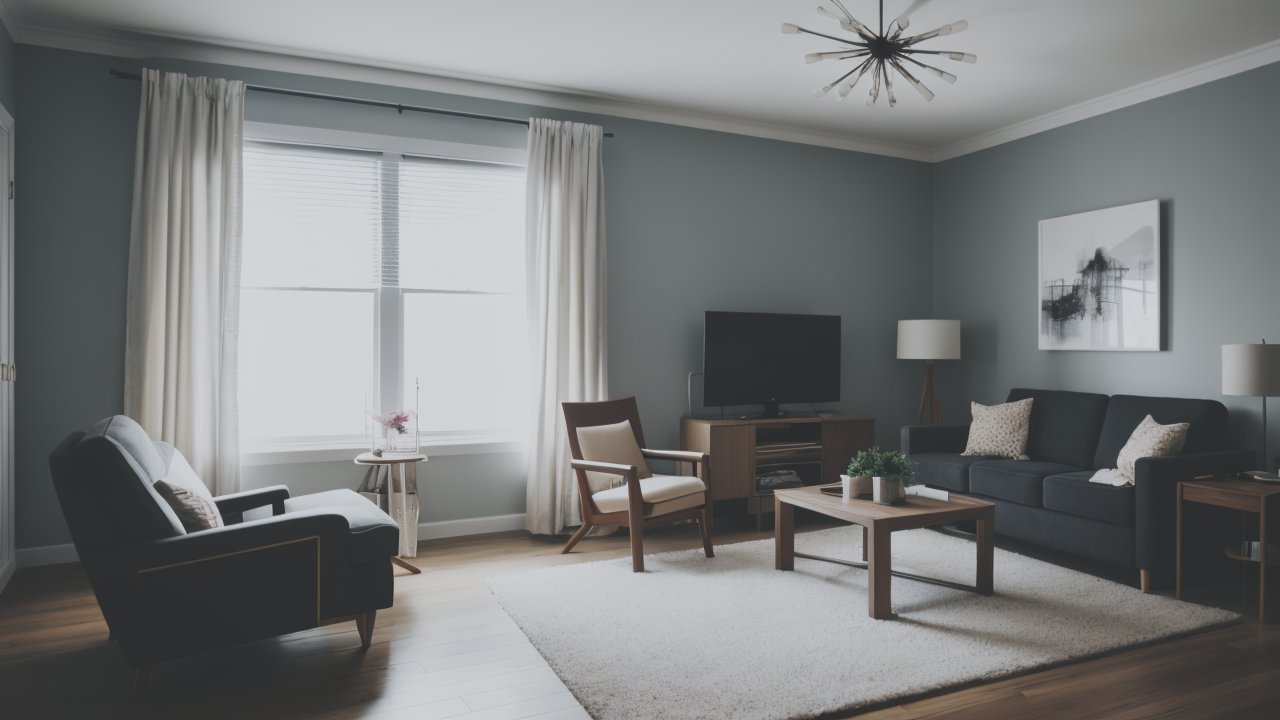
The Power of Less: How Contemporary Minimalist Nawabi Wall Art Transforms Interiors
Understanding the Allure of Minimalism in Modern Home Decor
The History of Minimalist Aesthetics
Minimalism has roots in early 20th-century art movements. It began as a reaction to the chaos of modern life. Artists sought simplicity and clarity in their work. This style quickly spread to architecture and design.

In the 1960s, minimalism gained popularity in the United States. It influenced everything from painting to sculpture. The focus was on basic geometric shapes and limited color palettes. This approach aimed to create a sense of calm and order.
Over time, minimalism evolved. It became less strict and more accessible to everyday people. Today, it's a popular choice for home decor. Many find its clean lines and simple forms appealing and restful.
Psychological Benefits of Minimalist Design
Minimalist design can have a positive impact on mental health. It creates calm, uncluttered spaces that reduce stress. This can lead to improved focus and productivity.
A minimalist environment can also promote better sleep. It removes distractions and creates a peaceful atmosphere. This can help the mind relax and prepare for rest.
Minimalism can foster a sense of control over one's surroundings. It encourages intentional choices about possessions. This can lead to greater satisfaction with one's living space.
Research shows that minimalist spaces can boost creativity. They provide a blank canvas for the mind. This allows for clearer thinking and new ideas to emerge.
The Rise of Minimalism in the United States Home Decor Market
In recent years, minimalism has surged in popularity in the U.S. home decor market. This trend is driven by several factors. Many people are seeking simpler, less cluttered lives.
The tiny house movement has also contributed to this trend. It emphasizes living with less and maximizing small spaces. This aligns well with minimalist design principles.
Social media has played a role in spreading minimalist aesthetics. Platforms like Instagram showcase clean, simple interiors. This has inspired many to adopt similar styles in their own homes.
Minimalist decor is now widely available at various price points. From high-end designer pieces to affordable options, there's something for every budget. This accessibility has helped fuel its growth in the market.
Key Considerations When Choosing Minimalist Nawabi Wall Art
Assessing Quality and Authenticity
When selecting minimalist Nawabi wall art, quality is crucial. Look for pieces made with durable materials. This ensures they will last and maintain their appearance over time.

Authenticity is another important factor. Research the artist or manufacturer. Verify that the piece is a genuine example of Nawabi art. This adds value and meaning to your decor.
Consider the craftsmanship of the piece. Well-made art will have clean lines and precise details. These elements are essential in minimalist design.
Don't forget to examine the framing or mounting. Quality framing complements the art and protects it. It also adds to the overall aesthetic of the piece.
The Role of Color Theory in Minimalist Art
Color plays a crucial role in minimalist art, even when used sparingly. Understanding basic color theory can help you choose the right piece for your space.
Neutral colors like white, black, and gray are common in minimalist art. They create a calm, clean backdrop for other elements. However, pops of bold color can also be effective.
Consider the emotions different colors evoke. Cool blues and greens can create a sense of tranquility. Warm reds and oranges can add energy to a space.
The color of your wall art should complement your existing decor. It can either blend seamlessly or provide a striking contrast. Both approaches can be effective in minimalist design.
The Importance of Proper Wall Art Placement
The placement of your minimalist Nawabi wall art is as important as the piece itself. Consider the size of the wall and the art. A large piece can be striking on a big wall. Smaller pieces can be grouped for impact.
Think about the height at which you hang the art. Eye level is generally recommended. This ensures the piece is easily visible and appreciated.
Consider the lighting in your space. Natural light can enhance the colors and textures of the art. You may need to add artificial lighting to showcase the piece properly.
Remember to leave enough white space around the art. This is crucial in minimalist design. It allows the piece to breathe and makes a stronger visual impact.
Implementing Minimalist Nawabi Wall Art in Various Home Styles
Integrating Minimalism into Traditional American Homes
Blending minimalist Nawabi wall art with traditional American decor can create a unique look. Start by choosing pieces that complement your existing color scheme.

Consider the scale of the art in relation to your furniture. A large piece can balance heavy traditional furniture. Smaller pieces can add subtle interest to a formal room.
Use minimalist art to create focal points in traditional spaces. A striking piece above a fireplace or in an entryway can modernize the look.
Don't be afraid to mix styles. The contrast between ornate traditional elements and sleek minimalist art can be very effective. It adds depth and interest to your decor.
Enhancing Minimalist Art with Contemporary Furniture
Pairing minimalist Nawabi wall art with contemporary furniture creates a cohesive modern look. Choose furniture with clean lines and simple forms to complement the art.
Consider the materials of your furniture. Sleek metals and smooth woods work well with minimalist art. They create a harmonious, uncluttered aesthetic.
Use your furniture to frame the wall art. A large sofa or sideboard can provide a perfect backdrop for a statement piece. This creates a gallery-like feel in your living space.
Remember that less is more. Don't overcrowd the space with too much furniture. Allow the art and key furniture pieces to shine.
Case Studies: Before and After Home Transformations with Minimalist Wall Art
Case Study 1: A cluttered living room was transformed with a large minimalist Nawabi art piece. The room's color scheme was simplified to complement the art. Excess furniture was removed, creating a more open, peaceful space.
Case Study 2: A bland bedroom became a serene retreat with the addition of minimalist art. A series of small pieces created a gallery wall. Bedding and curtains were updated to match the art's color palette.
Case Study 3: A traditional dining room was modernized with a bold minimalist piece. The existing furniture was kept, but accessories were pared down. The result was a perfect blend of old and new styles.
These transformations show the power of minimalist art to change a space. They demonstrate how a few key pieces can have a big impact on the feel of a room.


